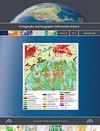用于应急响应的态势图中点特征符号的外部自动放置
IF 2.4
3区 地球科学
Q1 GEOGRAPHY
Cartography and Geographic Information Science
Pub Date : 2023-06-20
DOI:10.1080/15230406.2023.2213446
引用次数: 0
摘要
摘要在本文中,我们讨论了灾害和应急响应领域应急服务的时间关键性工作。为了在紧急行动中节省宝贵的人力和时间资源,我们提出了一种在态势图中自动放置战术符号的精确和启发式方法。这些地图用于建立态势感知,并向应急人员传达与任务相关的信息。通常,信息是通过描述性符号的可视化来传达的,这些符号主要放在手动过程中。我们根据德国应急服务部门使用的既定地图布局自动执行这一过程,该布局将符号分配到地图边界。根据一般原则和现有文献的观察,我们将符号放置形式化为一个优化问题。我们考虑了战术符号以及短和交叉自由前导的相关性,并允许相似语义和空间接近地图位置的符号的分组表示。在使用真实世界数据的实验中,我们确定了优化标准之间的平衡,并表明我们的启发式算法在不到一秒钟的时间内生成了高质量的结果。在一位专家的评估中,我们确认我们的地图适合在紧急情况下使用。本文章由计算机程序翻译,如有差异,请以英文原文为准。
Automating the external placement of symbols for point features in situation maps for emergency response
ABSTRACT In this article, we address the time-critical work of emergency services in the field of disaster and emergency response. Aiming at saving valuable human and time resources during emergency operations, we present one exact and one heuristic approach for the automatic placement of tactical symbols in situation maps. Such maps are used to establish situational awareness and to convey mission-relevant information to emergency personnel. Usually, the information is communicated through the visualization of descriptive symbols which are predominantly placed in a manual process. We automate this process based on an established map layout used by emergency services in Germany that distributes the symbols to the map boundaries. Following general principles and observations from existing literature, we formalize the symbol placement as an optimization problem. We take into account the relevance of tactical symbols as well as short and crossing-free leaders and allow the grouped representation of symbols of similar semantics and spatially close map locations. In experiments with real-world data, we determine a balance between the optimization criteria and show that our heuristic generates high-quality results in less than a second. In an assessment by an expert, we get confirmation that our maps are suitable for use in emergency scenarios.
求助全文
通过发布文献求助,成功后即可免费获取论文全文。
去求助
来源期刊
CiteScore
5.20
自引率
20.00%
发文量
23
期刊介绍:
Cartography and Geographic Information Science (CaGIS) is the official publication of the Cartography and Geographic Information Society (CaGIS), a member organization of the American Congress on Surveying and Mapping (ACSM). The Cartography and Geographic Information Society supports research, education, and practices that improve the understanding, creation, analysis, and use of maps and geographic information. The society serves as a forum for the exchange of original concepts, techniques, approaches, and experiences by those who design, implement, and use geospatial technologies through the publication of authoritative articles and international papers.

 求助内容:
求助内容: 应助结果提醒方式:
应助结果提醒方式:


